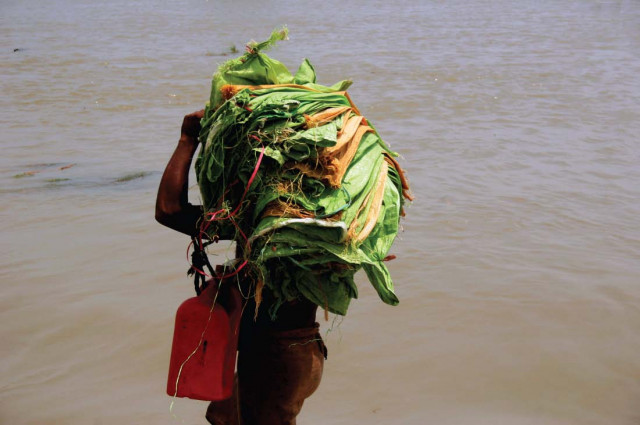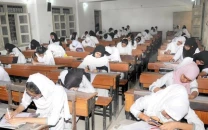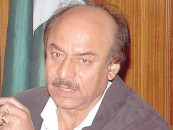Post-flood assessment: To a foreign eye, the govt is invisible in local villages
A German journalist is shocked at the absence of the state in flood-hit villages.

Post-flood assessment: To a foreign eye, the govt is invisible in local villages
“Everything is chaos in Pakistan,” says German journalist Janet Seiffot, commenting on her first trip to the country. “Nothing seems to come from the government.” This impression seems to have been reinforced by her visit to flood-affected villages near Bahawalpur and Hyderabad where as far as she could see, NGOs were doing the work of the state.
Take, for example, Haji Ali Burfat Goth near Hyderabad. As their mud houses have been rebuilt, residents appear satisfied with their lot, but Seiffot is nonetheless shocked. “They don’t even have stone houses,” she exclaims.
These villagers lost everything they owned when the water came and while they have a roof over their heads now, they continue to battle the aftereffects of the calamity. For example, many of them developed skin diseases among other ailments.
The next village, Raju Nizamani, appears to Seiffot to be in a slightly better condition. People who had previously lived in mud houses have built stone houses when they put their lives back together again. “It’s all NGOs helping them. Not the government. Nobody came. The only thing the people got from the government was ration cards,” she says. “And not even everyone got that. I don’t know how they survived.”
These changes are cosmetic. “The general situation doesn’t get better because these people don’t own the land, they only work for the landlord,” analyses Janet. She notes as well that the people seem to be dependent on help from the outside and are not self-sufficient. They only work to an extent and there is a limit to how much effort they make to improve their living conditions.
Another marker for Seiffot, when assessing the level of development, is education and, in this particular village, everyone seems to give a different excuse on why their children don’t attend school. Either the teacher has not returned after the waters went down or they came back but the child has not been able to go for some reason or the other. Either way, the children are workign the land, instead of sitting in the classroom.
The best case emerges in Goth Ahmed Shah, the village she visits on her second day. “People seem to have more power [here],” she says. And perhaps this is because the NGO working in the village, the Orangi Pilot Project, had engaged the people when rebuilding. It provided them material and roofs for houses — which would last even if another flood were to hit the village. As a result, the villagers put their houses together themselves. Women worked alongside the men and everyone was proud of the accomplishment.
To Seiffot it seems as if they have begun to think beyond their immediate situation. For example, they are enthusiastic and say that they wanted their children to attend school. The experience is proof that if provided with a helping hand, those displaced by the floods can contribute towards rebuilding their lives. If assisted in the right manner, people still living in camps could perhaps return. “Do not let them be dependent on help for long,” cautions Seiffot, warning of another danger. “If people try and live in the cities, they may not find employment there.” And this, in turn, will bring with it other problems.
Published in The Express Tribune, June 8th, 2011.



















COMMENTS
Comments are moderated and generally will be posted if they are on-topic and not abusive.
For more information, please see our Comments FAQ